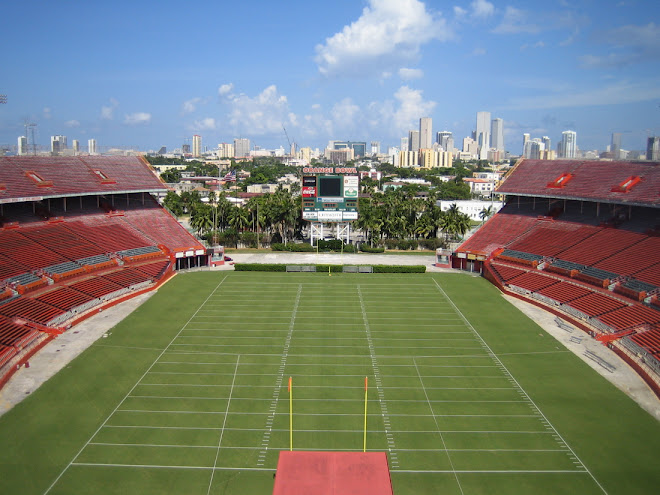
The great stadiums all have that special trademark feature that distinguishes it from any other facility. It doesn't have to be something flashy or extravagant. Boston's Fenway Park has the famed "Green Monster" left field wall. Chicago's Wrigley Field has the manual operated scoreboard and the ivy-covered brick walls. But when you walked into the Orange Bowl Stadium, you were greeted by the long, narrow sign made of thin sheet metal hanging from the north stands that read, "The City of Miami Welcomes You to the Orange Bowl." Along with the palm trees behind the east end zone, it made the Orange Bowl a unique place like nowhere else.
The famous stadium sign didn't always exist. When the Orange Bowl opened in 1937, it was originally known as Roddy Burdine Stadium, named after the famous local merchant. Burdine had died just months before it was built. The stadium capacity was just over 22,000 at the time and was single-decked. By 1948, the stadium was double-decked on both the north and south stands. Even though it was officially named Burdine Stadium, most fans and the media always referred to it as the Orange Bowl. By 1959, the stadium's name was officially changed to the Orange Bowl. But still the sign didn't exist.
By the early 1960s, the City of Miami continued to renovate and expand the stadium. A project was launched to double-deck the west end zone. In 1963 the west end zone became connected with the north and south stands. Several changes to the stadium were made, including a new scoreboard and a new entrance sign outside the west end of the stadium which read "Miami Orange Bowl" in large orange letters. But the most noticeable addition was the new sign that separated the upper and lower decks of the north stands, "The City of Miami Welcomes You to the Orange Bowl". It was painted orange with white letters. Over the years, the design and color scheme had changed. By 1983, the sign was remade was painted white with orange letters. In the late 1990s the sign was expanded to include names of former great University of Miami players as part of its Ring of Honor. Names like Vinny Testaverde, Bernie Kosar, Jim Dooley, Ted Henricks, George Mira and Ottis Anderson were among those listed.
I'm not sure where the sign is today. I would like to think someone has it saved and displayed in their backyard. Perhaps its in a museum. It's possible it was destroyed and recycled along with the rest of the rubble of concrete and steel during the spring of 2008. But whererever it is, the sign will go down as one of the great landmarks the City of Miami will ever have.

No comments:
Post a Comment